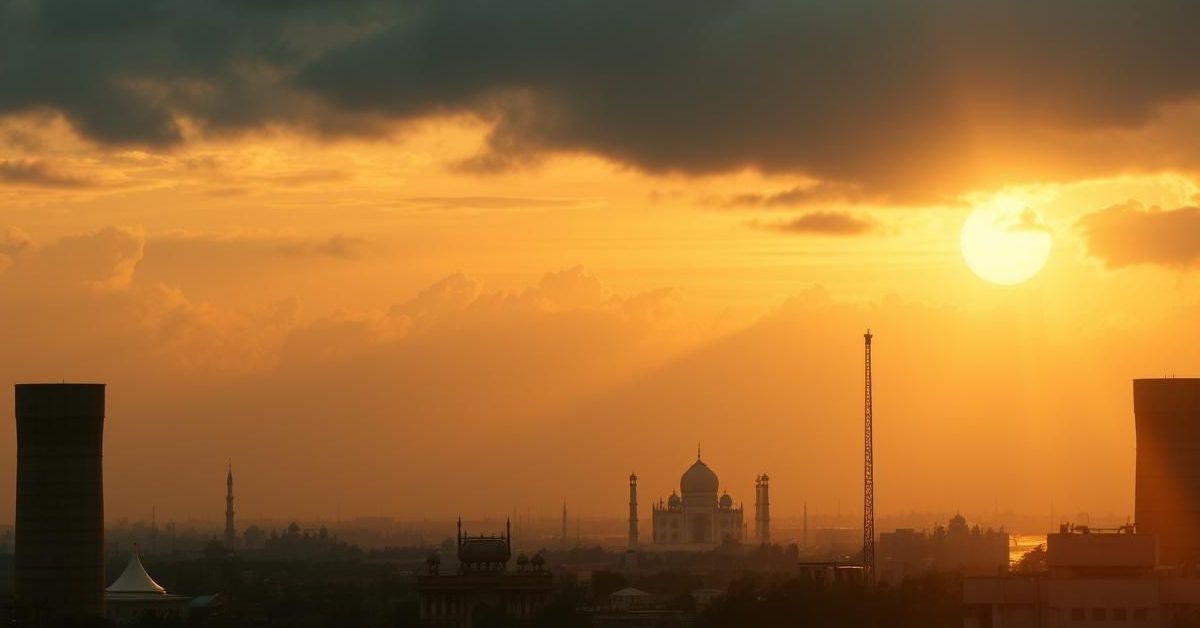India’s Economic Horizon: Navigating Uncertainty with Unyielding Growth
The air around India’s economic landscape is thick with anticipation – a potent mix of apprehension and exhilaration, as described by the nation’s own Finance Ministry. While India finds itself in what’s been termed a “relative goldilocks situation” – a sweet spot of balanced conditions – the relentless churn of global events means these are, undeniably, “nervous but exciting times” for the economy.
Geopolitical Tremors and Oil Price Volatility
Recent international events have cast long shadows over this promising outlook. The brief, intense flare-up between **Israel** and **Iran**, followed by the swift intervention of the **United States**, sent **crude oil prices** soaring. This surge, if sustained, would have posed a formidable threat to India’s ambitious growth targets and its carefully managed fiscal health for the current financial year.
Thankfully, the immediate crisis appears to have abated. A fragile ceasefire took hold, and oil prices, to the collective relief of global markets, began to retreat sharply. While the world benefits from an ample supply of oil, the lingering specter of increased insurance costs and the perceived risk of potential blockades in crucial maritime chokepoints, like the **Strait of Hormuz**, could still elevate landed prices. This intricate balancing act, or “high-wire act,” as the ministry aptly puts it, is one India must master for the foreseeable future.
Indeed, the market’s initial panic stemmed from **Israel’s** June 13 attack on **Iran**, intensified by the **US** targeting Iranian nuclear sites a week later. However, the tension swiftly dissipated when concerns over **Iran** blocking the vital **Strait of Hormuz** proved unfounded. The timely announcement of a ceasefire by **US President Donald Trump** on June 24 brought stability, allowing oil prices to cool and dip below the $70 per barrel mark.
A Resilient Economy: India’s Strength in Numbers
Despite these external pressures, the Indian economy continues to exhibit remarkable resilience. The **Finance Ministry’s** latest monthly economic review highlighted robust performance in the first two months of the current fiscal year, building on the higher-than-expected **Gross Domestic Product (GDP)** growth of 7.4% recorded in the January-March 2025 quarter. This steadfastness comes even amidst a “heightened geopolitical situation.”
High-frequency economic indicators paint a vivid picture of this underlying strength. **E-way bill generation**, a key barometer of business activity, climbed to an astounding 122.7 million in May 2025 – marking its second all-time high. This consistent double-digit year-on-year expansion underscores the vibrant commercial pulse of the nation. Furthermore, **diesel and petrol consumption** also reached record peaks in May 2025. This surge can be primarily attributed to a confluence of factors: increased leisure travel during the peak summer season, a boost in industrial activities driving transport operations, and intensified agricultural irrigation efforts.
While the ministry acknowledged a recent rise in **trade policy uncertainty**, India’s export sector has shown commendable fortitude. Merchandise and services exports collectively saw a 2.8% increase in May compared to the previous year. This performance, according to the ministry, “underscores the resilience of our exports in the face of tariff uncertainties and subdued global economic conditions.”
Inflationary Relief and Decisive Monetary Action
On the inflation front, there’s been significant good news for the common consumer. Inflation, as measured by the **Consumer Price Index (CPI)**, eased to a 75-month low of 2.82% in May. This positive trend empowered the **Reserve Bank of India (RBI)** and its influential **Monetary Policy Committee (MPC)** to act decisively.
Earlier in June, specifically on June 6, the **MPC** cut the benchmark **repo rate** by another 50 basis points (bps), bringing it down to 5.5%. This move alone takes the total quantum of rate cuts by the **RBI** in 2025 to a significant 100 bps. Concurrently, the **RBI** also announced a 100 bps reduction in banks’ **Cash Reserve Ratio (CRR)**, set to take effect later this year. According to the **Finance Ministry**, these “decisive actions” by the **MPC** are strategically aimed at easing funding costs for businesses, releasing a greater pool of loanable funds for the banking sector, and ultimately, bolstering credit growth across the economy.
A Brightening Horizon for India’s Job Market
While the unemployment rate saw a slight uptick in May, rising to 5.6% from 5.1% in April – a shift primarily attributed to seasonal factors as per the **Statistics Ministry’s Periodic Labour Force Survey** – the overall outlook for India’s job market remains distinctly positive.
Looking ahead, the **Finance Ministry** anticipates a steady trajectory for hiring and employment. The latest **TeamLease Employment Outlook Report** projects a net employment growth of 2.8% for the first half of the fiscal year (April-September) FY26. The report indicates that nearly half of all employers, 47% specifically, intend to expand their workforce during this period, signaling sustained talent acquisition momentum. Importantly, the **TeamLease** report also highlights a strategic evolution in hiring practices, shifting from mere quantity expansion to a focus on “quality expansion.” This involves a renewed emphasis on “skill density, retention over replacement, and AI-driven productivity” – trends that promise a more robust and adaptable workforce for India’s future.













